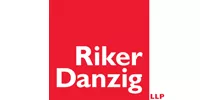This post covers the numerous new final rules that were issued by the federal government toward the end of 2020. In addition, the Department of Health and Human Services (“HHS”) updated its reporting requirements for the Provider Relief Fund, and the Centers for Medicare & Medicaid Services (“CMS”) issued a new model that covers those beneficiaries with dual eligibility for Medicare and Medicaid.
New Federal Regulations
HHS Issues Final Rule Clarifying When Substance Abuse Disorder Treatment Records May Be Disclosed
HHS issued its final rule amending the Substance Abuse and Mental Health Services Administration's (“SAMHSA”) regulation governing the Confidentiality of Substance Use Disorder Patient Records. The final rule is intended to clarify a condition under which a court may authorize the disclosure of a confidential communication made by a patient to a program. It also provides courts with the authority to permit the disclosure of a confidential communication when the disclosure is necessary to the investigation or prosecution of “an extremely serious crime, such as one which directly threatens loss of life or serious bodily injury, and in which access to substance use disorder treatment records is necessary in connection with the investigation or prosecution of that extremely serious crime.” The final rule is effective January 13, 2021.
FEMA Extends Rule Preventing Exports of Certain PPE
The Federal Emergency Management Agency (“FEMA”) issued a temporary final rule extending the effective date and implementing modifications to a FEMA rule first issued in April 2020. The original rule prevented resources, including personal protective equipment (“PPE”), from being exported from the United States without explicit approval by FEMA. The types of PPE covered by the rule have evolved over the past several months, and this most recent modification includes, among other changes, syringes and hypodermic needles (whether distributed separately or attached together) to the list of PPE covered by the rule.
CMS Issues Final Rule Supporting Value‑Based Purchasing for Drugs Covered in Medicaid
CMS issued a final rule that increases flexibility for states, payers, and drug manufacturers to enter into value‑based purchasing (“VBP”) arrangements for prescription drugs in a manner that is consistent with the law and maintains the integrity of the Medicaid Drug Rebate Program (“MDRP”). With respect to manufacturers' obligation to report the best price under the MDRP, the final rule expands the definition of “best price” to permit manufacturers to report varying best price points for a drug under a VBP arrangement. For example, a commercial health insurer could agree to pay different prices for a given product based on the success of the product. Under the final rule, a manufacturer offering VBP arrangements to all states is permitted to report the lowest price that any payer negotiates for each outcome as a “best price,” in addition to the lowest available price absent a VBP arrangement. Manufacturers that do not offer VBP arrangements to states are required to report the single best price available outside of such arrangements. States may choose to enter into the VBP arrangements or opt out and continue to receive the traditional federal Medicaid drug rebate. CMS intends that beneficiaries will have better access to medications under the rule by allowing manufacturers to offer VBP arrangements to states and report varying best price points, as applicable. These regulatory amendments will not be effective until January 1, 2022, to allow states, payers, manufacturers, and CMS sufficient time to implement this “multiple best price/VBP” regulatory flexibility.
CMS Adopts New Transaction Standard for the Medicare Prescription Drug Benefit Program's E‑Prescribing Program Under the SUPPORT Act
CMS has released a final rule adopting a new standard for certain transactions concerning Part D‑covered drugs under the e‑prescribing program as required by the Substance Use‑Disorder Prevention That Promotes Opioid Recovery and Treatment for Patients and Communities Act (referred to as the “SUPPORT Act”). Under this final rule, Part D plan sponsors will be required to support version 2017071 of the National Council for Prescription Drug Programs SCRIPT standard for four electronic Prior Authorization (“ePA”) transactions, and prescribers will be required to use that standard when performing ePA transactions for Part D‑covered drugs they wish to prescribe to Part D‑eligible individuals. The rule is effective February 1, 2021.
Final Rule on Insulin and Injectable Epinephrine
The Health Resources and Services Administration (“HRSA”) has issued a final rule implementing Executive Order 13937, which requires entities funded under Section 330(e) of the Public Health Service Act (the “PHS Act”), that also participate in the 340B Drug Pricing Program, to establish practices to provide access to insulin and injectable epinephrine to low income patients. Specifically, the rule establishes a requirement for awarding new grants under Section 330(e) of the PHS Act that the awardee has established written practices to make insulin and injectable epinephrine available at or below the discounted price paid by the health center grantee or subgrantee under the 340B Program (plus a minimal administration fee) to health center patients with low incomes who: (a) have a high cost sharing requirement for either insulin or injectable epinephrine; (b) have a high unmet deductible; or (c) have no health insurance. The rule is effective January 22, 2021.
CMS Issues Final Rule to Amend the U.S. Department of Health and Human Services' Risk Adjustment Data Validation Program
CMS issued a final rule to amend the methodology and other program parameters for the HHS's risk adjustment data validation (HHS-RADV) program. HHS-RADV was created to strengthen the integrity of the HHS-operated risk adjustment program by validating the accuracy of data submitted by issuers that is used to calculate the amount of funds transferred among insurers based on the actuarial risks of the individuals they enroll. This rule also finalizes a change to the benefit year to which HHS-RADV adjustments to risk scores and risk adjustment transfers would be applied beginning with the 2020 benefit year of HHS-RADV.
Dispute Resolution Procedure for the 340B Program
Effective January 13, 2021, HRSA issued this final rule, which applies to all drug manufacturers and covered entities that participate in the 340B Drug Pricing Program. The final rule establishes requirements and procedures for the 340B Program's administrative dispute resolution process.
HHS Issues Final Rule Adding Flexibilities to Health Plans With Grandfather Status
For those health plans that have grandfather status under the Patient Protection and Affordable Care Act, this final rule issued by HHS amends current rules to provide greater flexibility by allowing such plans to make changes to certain types of fixed‑ amount cost‑sharing requirements without causing a loss of grandfather status.
HHS Provider Relief Fund Reporting Requirements: Important Updates Every Provider Should Know
HHS recently revised reporting requirements for the use of Provider Relief Funds (“PRFs”). This revision is in addition to the July 20, 2020 Post-Payment Notice of Reporting Requirements. Providers with more than $10,000 in PRFs must report on the use of the funds through December 31, 2020. The reporting window begins on January 15, 2021, and providers must complete reporting obligations for fiscal year 2020 via an HHS portal by February 15, 2021. Providers that have additional funds as of December 31, 2020, will have through June 30, 2021 to use the remaining funds toward expenses attributable to the coronavirus, but not reimbursed through other sources. Providers that do not have, or do not anticipate that they will have, eligible expenses or lost revenue in excess of the PRFs must return the funds by July 31, 2021. Providers must carefully calculate their expenses attributable to and lost revenue due to COVID‑19 in accordance with the new guidance issued by HHS through a two-step analysis.
First, providers must calculate expenses that are attributable to COVID‑19 and not reimbursed by another source or not obligated to be reimbursed by another source. Providers that received between $10,000 and $499,999 in aggregate PRFs will only need to report health care related expenses attributable to COVID-19 less other sources of reimbursement (insurance payments, government assistance, etc.) separately in the two categories of general and administrative expense and health care related operating expenses, both of which are defined in detail in the revised guidance document. Providers that received $500,000 will be required to report more detailed expense information using worksheets.
Second, providers must compare 2019 patient care revenues to 2020 patient care revenues and the year‑over‑year net change in patient care revenues from 2019 to 2020. Providers must also report other assistance received in 2020 such as the Paycheck Protection Program.
CMS Announces New Model Opportunity for Medicaid Managed Care Organizations Serving Beneficiaries Dually Eligible for Medicare and Medicaid
CMS's Center for Medicare & Medicaid Innovation has announced a new model opportunity to enable Medicaid Managed Care Organizations (“MCOs”) to better coordinate Medicare and Medicaid services for dually‑eligible beneficiaries. The new model allows MCOs to participate in the Global and Professional Options of the Direct Contracting Model. Examples of the actions MCOs and their affiliates serving as MCO‑based Direct Contracting Entities – organizations that participate in Direct Contracting via a participation agreement with CMS – could take to better serve dually eligible beneficiaries include, among other things:
- Risk-stratifying and targeting care coordination resources toward aligned beneficiaries at risk of high Medicare spending;
- Deploying care coordinators or in-home aides who provide Medicaid long term services and support to also actively promote flu vaccines, preventive screenings, evidence-based falls prevention, and diabetes management activities; and
- Entering into value-based purchasing arrangements with nursing facilities that factor in facilities' hospitalization rates.
The content of this article is intended to provide a general guide to the subject matter. Specialist advice should be sought about your specific circumstances.





